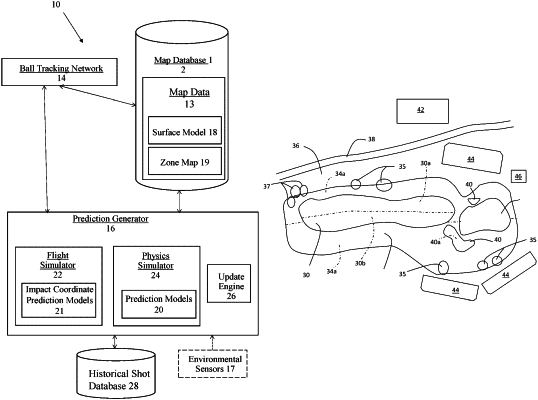| CPC A63B 24/0021 (2013.01) [A63B 2024/0028 (2013.01); A63B 2024/0037 (2013.01); A63B 69/3691 (2013.01)] | 24 Claims |

|
1. A system for predicting a resting position of a golf ball, the system comprising:
a processor and memory storing instructions that when executed by the processor cause the system to perform operations of the system;
a ball tracking network comprising a plurality of sensors positioned around a golf course to collect ball flight data of balls after being struck, the sensors comprising cameras, radar devices, laser devices, or combination thereof;
a flight simulator configured to:
use the ball flight data collected by the ball tracking network to predict a first impact location and impact physics of a ball after being struck; and
identify a coordinate within a coordinate space defined with respect to the course or surrounding area that corresponds to the predicted first impact location;
a physics simulator configured to:
select a first prediction model from a plurality of prediction models that corresponds to the predicted first impact coordinate, and apply the predicted first impact physics and a surface topography of the predicted first impact location to the first prediction model to predict a second impact location and corresponding second impact coordinate and second impact physics, wherein each of the plurality of prediction models correspond to one or more of the coordinates defined with respect to the course or surrounding area; and
select a second prediction model from the plurality of prediction models that corresponds to the predicted second impact coordinate, apply the predicted second impact physics and a surface topography corresponding to the predicted second impact location to the second prediction model to predict a next impact coordinate and impact physics, and repeating until a final resting position is generated; and
an update engine configured to compare predicted final resting positions generated for multiple struck balls to actual final resting positions for the multiple struck balls for a sliding window of historical shots, and update one or more coefficients of the prediction models that result in the least amount of error between predicted and final resting positions.
|